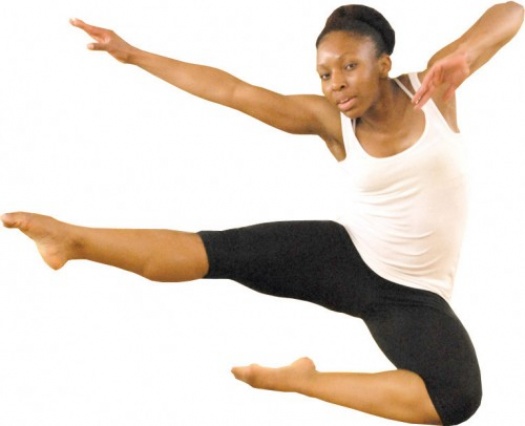
“If I could describe the dance life in two words, they would be ‘hustle’ and ‘challenge,’” mused Dionna Pridgeon. Not a response you expect to hear from someone who just won a coveted spot in the Emmy Award winning Cirque du Soleil show, a con
But the 26-year-old jazz, ballet and hip hop instructorû5 feet 3 inches tall with an athletic build, and a self described “emotional dancer”ûoften finds herself an anomaly in a dance culture enamored with leggy, slim ballerina-types.
Despite the fact that she was one of only 100 Chicago dancers and gymnastsû and of only a few African Americansûinvited to do a private audition with Cirque du Soleil in March, Pridgeon did not think much of it. She had become accustomed to making it far in auditions, only to be cut because of her race, height, or lack of ballet experience.
“I’m not a person that has amazing technique as far as flexibility because I didn’t grow up with ballet training… I feel what I’m dancing, and that’s what dance is about. It’s not about technique. You use (technique) but then you need to put it aside andàpull something from within yourself. There should be something that makes you want to dance.”
But at the end of the two-day audition, that covered modern, ballet, contemporary, hip hop, improv and freestyle dance, Pridgeon emerged as one of three selected to join Cirque du Soleil’s cast. Pridgeon, who started dancing at a studio in west suburban Bellwood as a little girl, is now one of Cirque du Soleil’s 1,000 artists who perform in 200 cities on five continents worldwide. She just got her first passport and will join the cast within the next several months.
Despite the big gig, Pridgeon remembers how challenging dance has been since she decided to pursue it at Pittsburgh’s Point Park University. Pridgeon, a Black girl who didn’t start ballet until after high school, did not fit the Point Park mold. “You had people who have been competition dancers for a while, so they could do all these amazing things and then you had these ballerinas who’d been training all their lives, and I don’t fit in any of those categoriesà
I realized that I just had to be myself. And people noticed me anyway, because I was the only Black girl in class,” she recalled. University instructors noticed Pridgeon’s raw talent and cast her in every show she auditioned for. She eventually branched out, choreographing for the Pittsburgh Dance Ensemble and Pittsburgh Black Theater Dance Ensemble.
Soon after returning to Chicago, she started substitute teaching at the critically acclaimed Hubbard Street Dance Studio in the West Loop. She eventually became a staff member, and added two more studios to her teaching roster. She choreographed for the Cerqua Rivera Dance Theater company, and danced back up for local artists. But it frustrated Pridgeon to see so few African Americans turn up at professional auditions, or take her classesûespecially hip hop.
“With hip hop a lot of African Americans don’t think they need to do class. They think hip hop is what you see in the videos. It’s not just booty shaking, there is technique to hip hop just like anything else. Asians are surpassing us in hip hop. I see it. That’s crazy, when hip hop is a part of our culture,” she lamented But being different hasn’t kept Pridgeon out of dance. She has embraced who she is as a dancer, and is inspired when she teaches others to do the same.
“If I wasn’t dancing, I don’t know what else I would be doing,” she said. “If I’m going through somethingàI will turn off everything in the house and I’ll just put on music. Whatever I put on, if I don’t start dancing to it right away, I change the songà”
______
Copyright 2008 Chicago Defender. All rights reserved. This material may not be published, broadcast, rewritten, or redistributed.
